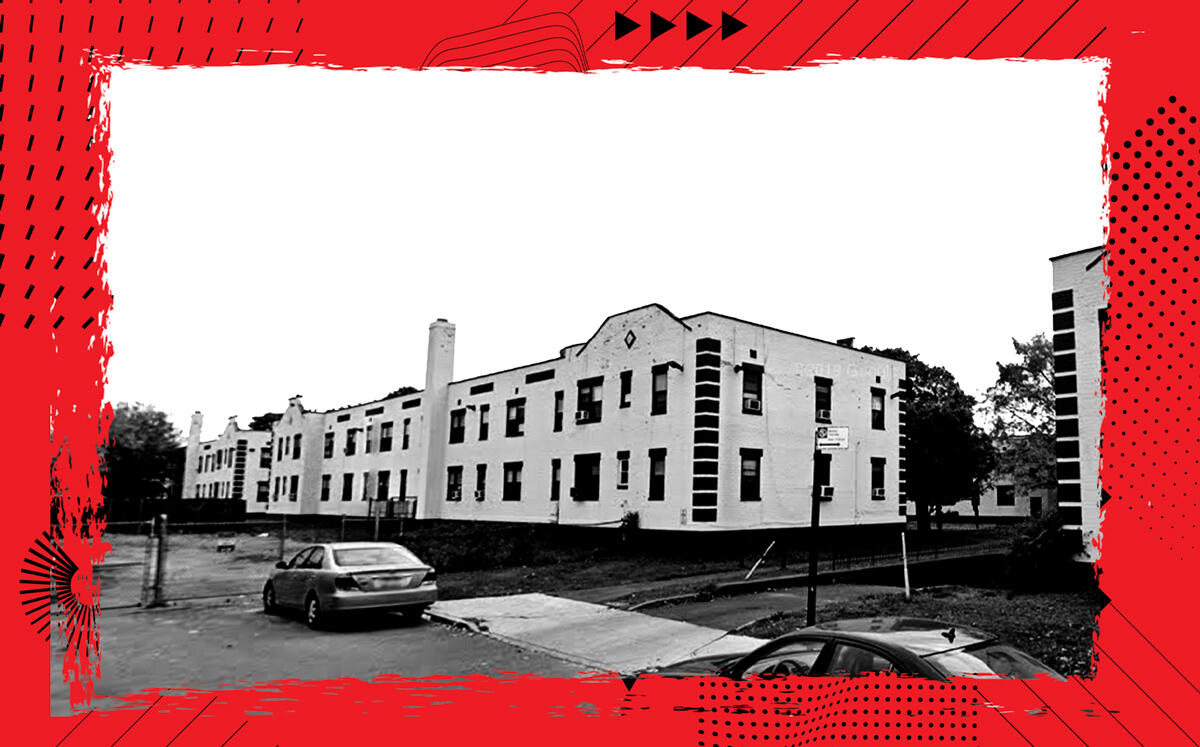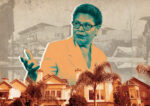 Newsom signs 2 controversial measures to boost housing. Will they be consequential?
Newsom signs 2 controversial measures to boost housing. Will they be consequential?
Trending
Developing in downtrodden areas gets dicey
Blamed for disinvestment, industry is now accused of the opposite

It was a striking reaction, tucked into the middle of a City Limits story about a plan for a forlorn section of Brooklyn.
Jessica Franco, fighting a 210-unit development to replace her aging, low-slung apartment complex, said it would trigger an influx of high-earning white people, making East New York “look like Downtown Brooklyn.”
The real estate industry has seen this movie many times. There are two basic plot lines for racially tinged housing fights:
- White, single-family homeowners opposing apartment projects, lest poorer people infiltrate their picket-fenced sanctuaries
- Black and Latino tenants opposing market-rate housing, lest richer people displace them and their culture
One naysayer group is historically advantaged, the other historically disadvantaged. For this reason, white opponents of rental housing are often viewed as selfish and racist, while Black foes of market-rate development are portrayed as clinging to tenuous footholds. That’s not unfair; it’s just a fact that builders have to deal with.
Take, for example, the City Limits story. It opened with a moving recollection by a resident of the buildings slated for demolition:
When Hector Reyes was growing up, his side of Arlington Village was a vibrant community.
Neighbors in his brown brick building, one of two sections in the East New York apartment complex, used to organize barbecues in its grassy courtyard, flipping burgers as he and his friends ran around, he recalled.
But as Reyes, now 46, grew older, he watched families around him disappear as past owners let the property fall into disrepair. Today, Reyes’ family is one of just a handful left in six occupied units of the ramshackle brick dwelling, where green boards and wooden slats cover what were once windows and doors.
A reader might expect the next sentence to say Arlington Village residents were optimistic about David Levitan’s plan to move them into spiffy new apartments and bring their struggling pocket of Brooklyn back to life. Instead, it said:
Now, they’re worried that even this crumbling home will be taken away from them.
For good measure, the headline called the project a “high rise.” It would be 14 stories.
The issue for apartment developers and policymakers is that despite the vast difference between the two types of opponents, both are stopping new homes. That’s the last thing a tight market needs.
Curtailing supply makes housing more expensive, which benefits homeowners — until their children want a place of their own. Then these same folks complain about the cost of housing, blithely unaware that they contribute to the problem by defending single-family zoning or opposing development.
Read more
 Newsom signs 2 controversial measures to boost housing. Will they be consequential?
Newsom signs 2 controversial measures to boost housing. Will they be consequential?
 State should stop exclusionary zoning in New York suburbs: report
State should stop exclusionary zoning in New York suburbs: report
Housing proponents need a better playbook to overcome these objections.
In the suburbs, shaming single-family zealots by calling them racist or classist feels righteous but is not effective. Neither is taking them to court: New Jersey suburbs have successfully resisted affordable housing mandates despite losing the famous Mt. Laurel cases in 1975 and 1983.
Enticing the ’burbs with federal grants has been problematic, too: Westchester County took gobs of money from Washington without delivering on its end of the bargain: multifamily zoning.
The Biden administration is still trying the carrot-and-stick approach, threatening to withhold transportation grants to localities that have exclusionary zoning. But candidates win local elections by defending such zoning. Statewide affordability policies, like Gov. Kathy Hochul’s proposal for accessory dwelling units, typically die at the sharp ends of pitchforks, too.
There have been exceptions: California and Minneapolis both banned single-family zoning. For various reasons, however, the effects of these seemingly sweeping laws will be limited.
Increasing density in urban areas has been problematic as well, for some of the same reasons: fear of the unknown, aversion to change, political pandering, homeowners’ financial incentive and the myth that development causes rent hikes and displacement.
In both cases, race has played a role. Residents believe new types of housing will attract people who don’t look, act or shop like they do.
“It’s very easy to replace a small mom-and-pop coffee shop with a Starbucks,” East New York’s Franco told City Limits. “And folks who can afford to pay $3,000 for a two-bedroom can absolutely afford to pay $8 for a coffee.”
The reality is, her neighborhood is nowhere close to being taken over by latte-sipping yuppies. Virtually no market-rate housing has been built there for decades. Even if developers thought it would be profitable, lenders did not, and it’s not clear any have changed their minds. No loan, no project.
Levitan thinks he can make it work. The problem is not just finances, though, it’s politics. The local City Council member, who by custom can stop the rezoning Levitan needs, says she will defer to her constituents. Translation: whoever speaks up. That figures to be Franco and others like her.
That’s the no-win for developers in poor, urban areas. Complaints about investment there have eclipsed complaints about the lack of it.
This happened because past actions by the industry and government cost them the trust of people of color, and because people came to believe development caused gentrification, although it was really the other way around.
After World War II, the federal government and real estate industry steered development to the suburbs so Americans could pursue a racially segregated, auto-dependent lifestyle, leaving the so-called “inner cities” behind.
Various attempts have since been made to draw investment back to neighborhoods plagued by crime and poverty — some well-meaning, few successful. Perhaps the most controversial was urban renewal, which has been described as “the process of seizing and demolishing large swaths of private and public property for the purpose of modernizing and improving aging infrastructure.”
Other efforts included public housing, which now houses about 8 percent of New York City residents, and tax breaks for private development in “blighted” areas, which were given such labels as Empire Zones, Empowerment Zones, and, most recently, Opportunity Zones.
Overcoming opposition to new housing supply has proven so difficult that communities have resorted to desperate measures like rent control, which in St. Paul has brought apartment construction to a near halt. In New York, progressives killed the tax break most often used to develop affordable housing, so only projects that got in under the old law are proceeding.
One promising sign in New York City is that well-to-do neighborhoods with liberal leadership have embraced rezoning for more density, which mandates affordable units in new buildings. As a result, Soho and Gowanus will get thousands of new homes for people at all income levels. That will make a dent in the city’s housing crunch.
Elsewhere, things look bleak. The anti-development dynamic in low-income urban communities now seems to mirror that in high-income suburbs. The opponents could not be more different, but their reasons are, in many ways, exactly the same.




